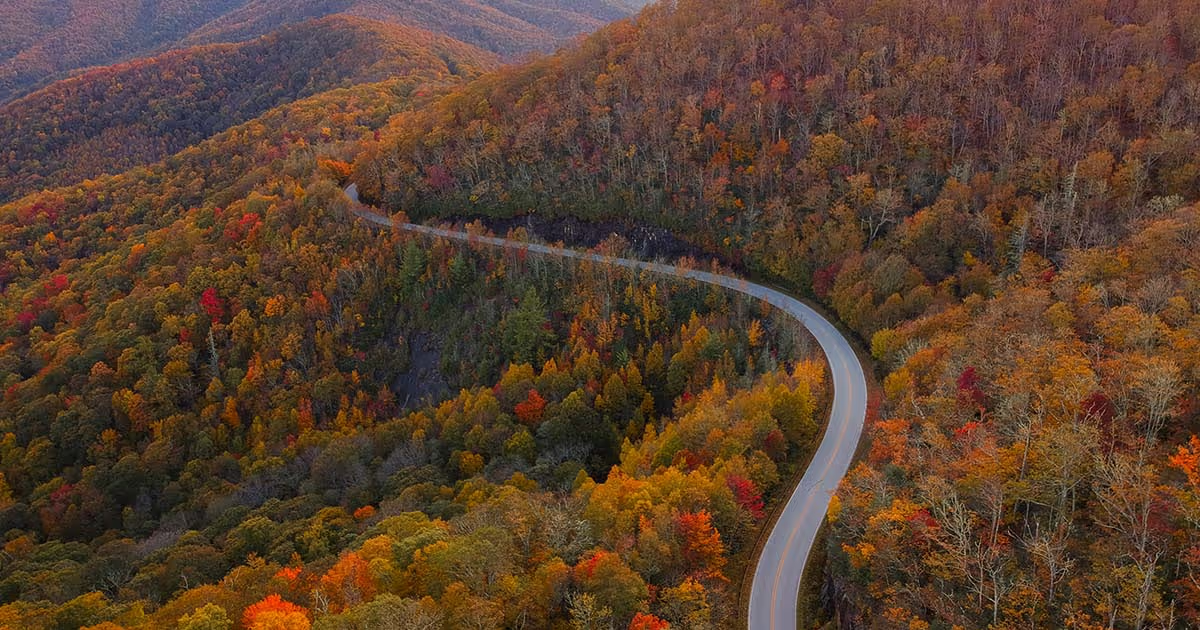Spectacular fall color is now cascading down the Appalachian Mountains, with peak conditions shifting from the highest summits into mid-elevation ranges, according to East Tennessee State University’s latest foliage report.
The takeaway: Autumn displays are becoming increasingly visible and accessible across the region.
“We’re seeing good color development,” said Travis Watson, ETSU’s campus arborist. “The highest peaks have reached peak, and now mid-elevation mountains are showing nice color progression.”
Mid-elevations taking center stage
Mid-elevation ranges — roughly 3,000 to 4,500 feet — are now in their prime viewing window, with west-facing slopes showing some of the most vibrant color.
“I’m seeing strong color looking up toward Buffalo Mountain from campus, especially on the west-facing slopes,” said Dr. Andrew Joyner, Tennessee’s state climatologist and ETSU associate professor.
Lower elevations are also beginning to change, as early-turning species add splashes of red and gold to valleys and foothills. This gradual transition across elevations creates the long viewing season that makes Appalachian fall color so remarkable.
Dry weather impact
Recent dry conditions have affected some areas more than others.
The U.S. Drought Monitor now shows moderate drought in southern Carter County and abnormally dry conditions in parts of southern Sevier, Cocke and Greene counties, primarily in more mountainous areas.
“Some tree species more vulnerable to drought, like poplar, red oaks, hickories and some maples, will likely have duller colors in the coming weeks,” Joyner said. “But other more drought-tolerant species – white oaks, chestnut and red maple – should still provide good color in most areas.”
The I-26 corridor between the Tennessee-North Carolina state line and Asheville has received more rainfall recently and may offer particularly vibrant displays.
Where to find the best views
Popular mid-elevation destinations like Roan Mountain State Park, areas along the Appalachian Trail, and scenic byways throughout the region are offering autumn displays worth experiencing.
Watson and Joyner have previously highlighted favorite viewing spots, including the Blue Ridge Parkway, Roan Mountain’s Grassy Bald and Laurel Fork Falls.
Color quality will vary by location and species composition, making exploration part of the autumn adventure. Areas with more drought-tolerant tree species or recent rainfall will likely show the most vibrant displays.

Plan your excursions
With autumn color descending through the mountains and mid-elevations at their peak viewing window, now is an excellent time to experience Appalachian fall.
“Don’t wait. Get out and enjoy the season across Southern Appalachia,” Watson said.
Whether hiking mountain trails or taking scenic drives, the region offers abundant opportunities to witness the natural beauty of Appalachian autumn, even as conditions vary across the landscape.
About ETSU fall color reports
ETSU publishes weekly fall color reports each Friday throughout the season, combining scientific expertise with deep regional knowledge to help locals and visitors experience the best of Appalachian autumn. As the flagship university of Appalachia, ETSU is uniquely positioned to share both the science and beauty of the region’s spectacular fall foliage displays.
For more on all the region has to offer, visit etsu.edu/our-region.




%20(1).jpg)
_compressed.avif)